Table of Contents
Overview – Cell Membrane and Transport
The cell membrane is a dynamic lipid-protein barrier that regulates transport of substances into and out of the cell. Its structure and transport mechanisms are fundamental to physiology, pharmacology, and pathology. Understanding how materials cross this barrier—passively or actively—is crucial for interpreting cellular signalling, fluid balance, drug uptake, and immune responses.
Definition
The cell membrane (plasma membrane) is a semi-permeable phospholipid bilayer embedded with proteins. It separates the intracellular environment from the extracellular space and mediates communication, transport, and structural support.
Membrane Structure
Phospholipid Bilayer
- Composed of diglycerides (phospholipids)
- Hydrophilic head (glycerol + phosphate)
- Hydrophobic tails (saturated and unsaturated fatty acids)
- Molecules are held together by hydrophobic interactions
- Allows flexibility and selective permeability
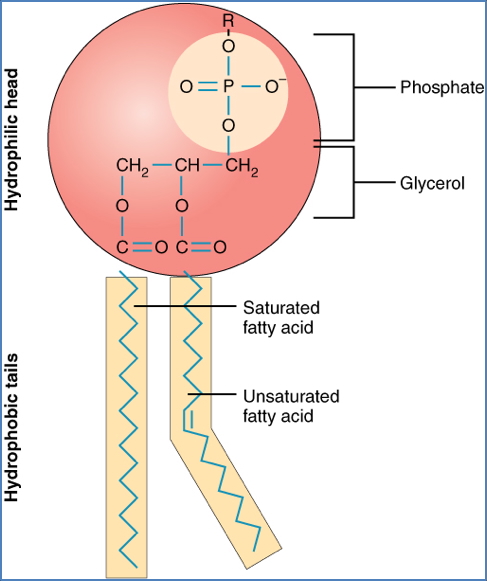

Membrane Proteins
- Peripheral Proteins
- Associate with polar head groups
- Easily removed by pH or ionic shifts
- Integral Proteins
- Span the bilayer
- Must be solubilised with detergents to remove
- Include transporters, receptors, and channels

Transport Across Cell Membranes
Substances move across membranes via passive or active mechanisms.
Passive Transport
Requires no energy input. Substances move down their concentration or electrochemical gradient.
1. Simple Diffusion
- Small, uncharged, lipid-soluble molecules
- E.g. O₂, CO₂, ethanol, glycerol, steroids, fat-soluble vitamins

2. Facilitated Diffusion
- Movement via membrane transport proteins
- Two types:
Carrier Proteins
- Bind specific solutes → undergo conformational change
- High substrate affinity
- Slower; inhibited by temperature
- E.g. Glucose uniporters
Channel Proteins
- Act as gated pores
- Transport ions based on size and charge
- No substrate binding
- Not temperature-dependent
- Rapid flow once opened
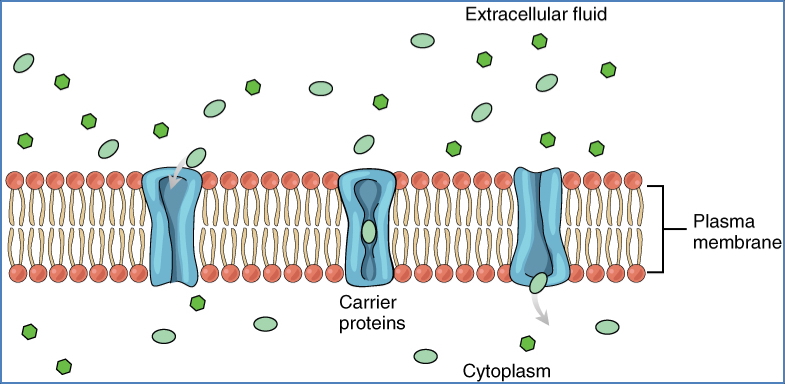

3. Osmosis
- Passive movement of water
- Through the membrane or aquaporins
- Moves from hypotonic → hypertonic to equalise solute concentration
- Osmoregulation is vital for cellular integrity
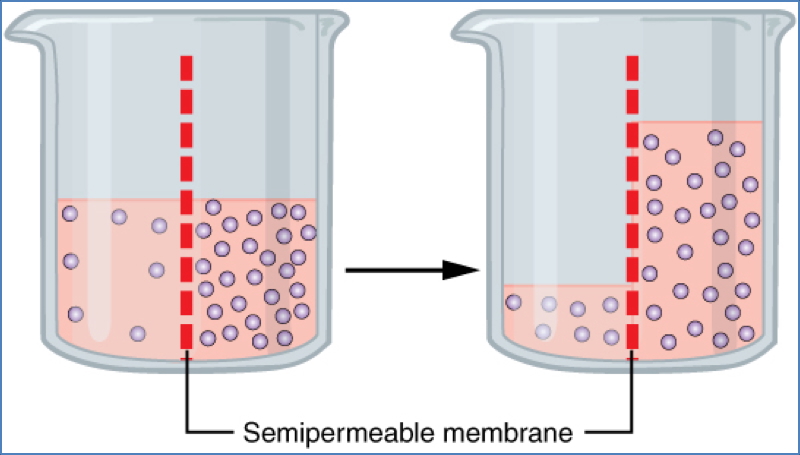
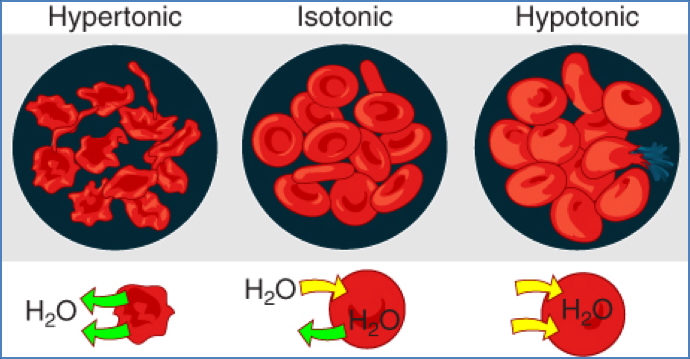
Active Transport
Requires energy (usually ATP). Substances move against their concentration gradient or are too large for diffusion.
Primary Active Transport
- Direct use of ATP
- E.g. Na⁺/K⁺-ATPase pump
- 3 Na⁺ out, 2 K⁺ in
- Maintains electrochemical gradient
- Mechanism:
- Na⁺ binds to cytoplasmic side
- ATP phosphorylates protein
- Protein changes shape, releasing Na⁺
- K⁺ binds extracellularly
- Dephosphorylation restores original shape
- K⁺ released inside
- Cycle repeats
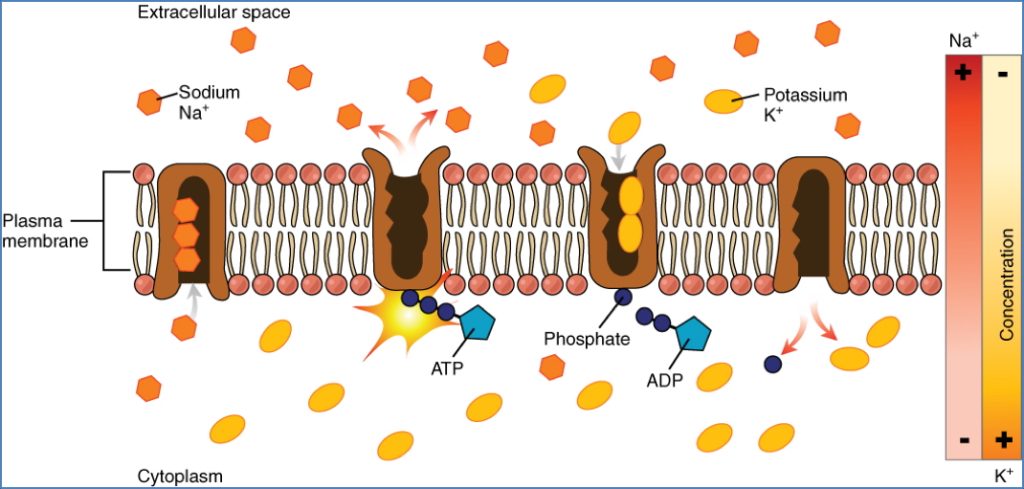
Secondary Active Transport
- Driven by ion gradient from primary transport
- Symporters: Two solutes move in same direction
- E.g. Na⁺-glucose symporter (glucose uptake using Na⁺ gradient)
- Antiporters: Two solutes move in opposite directions
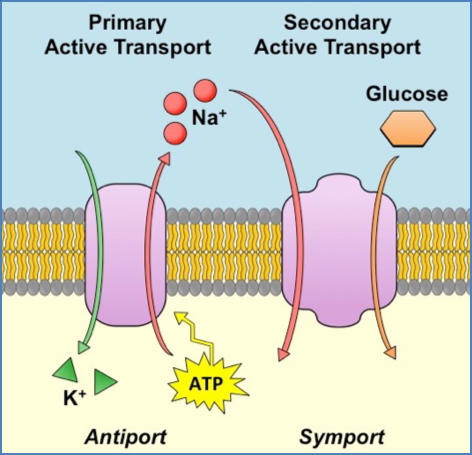
Vesicular Transport (Bulk Transport)
Used for macromolecules, fluids, and large particles
Exocytosis
- Expels materials from cell
- Vesicle fuses with plasma membrane
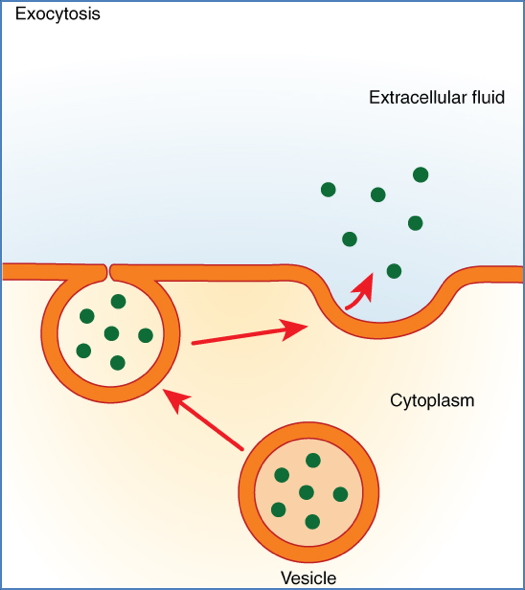
Endocytosis
- Engulfs materials into vesicles
- Three types:
- Phagocytosis: Engulfs large particles (e.g. bacteria)
- Pinocytosis: Engulfs fluid and small solutes
- Receptor-mediated endocytosis: Specific ligand-receptor binding triggers internalisation
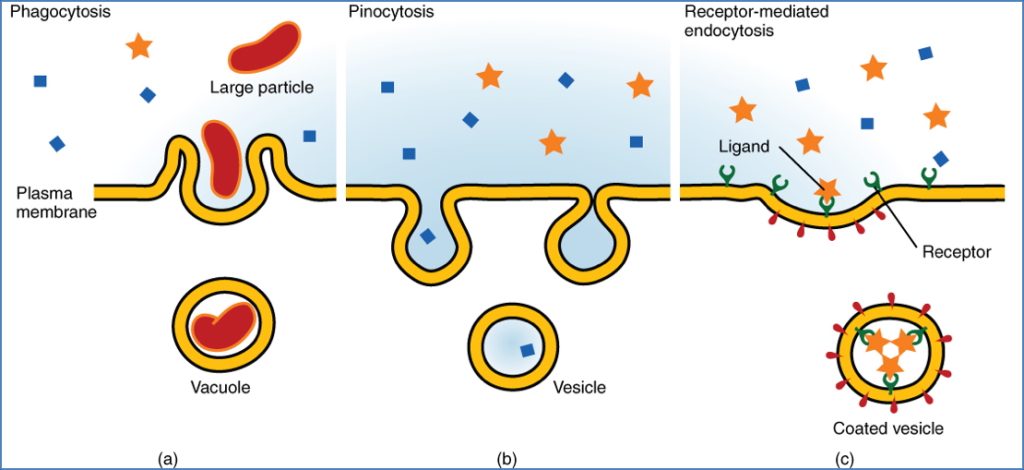
CNX OpenStax, CC BY 4.0 <https://creativecommons.org/licenses/by/4.0>, via Wikimedia Commons
Summary – Cell Membrane and Transport
The cell membrane regulates material exchange through passive and active transport. From simple diffusion to complex receptor-mediated endocytosis, these processes underpin essential cellular function, drug transport, and fluid balance. For a broader context, see our Cell Biology & Biochemistry Overview page.